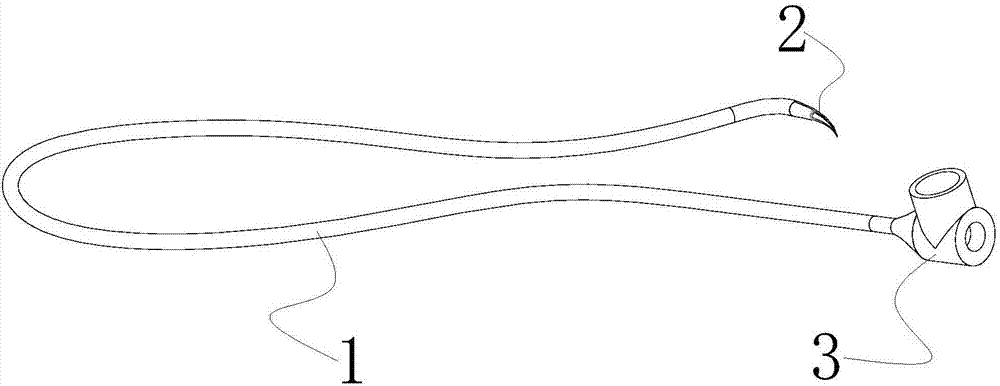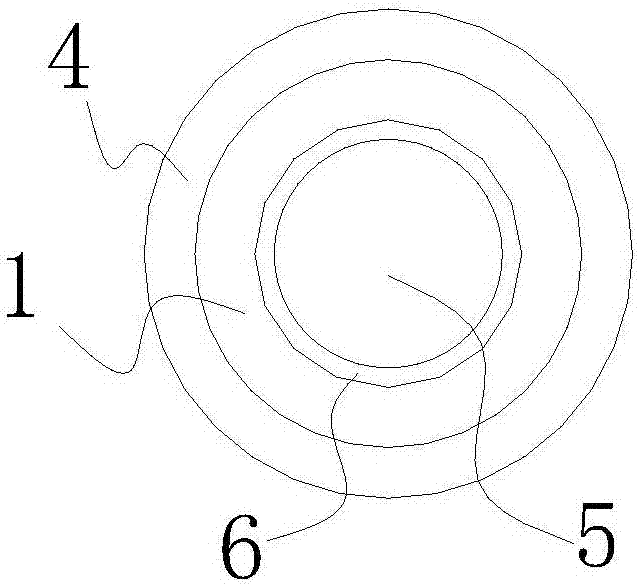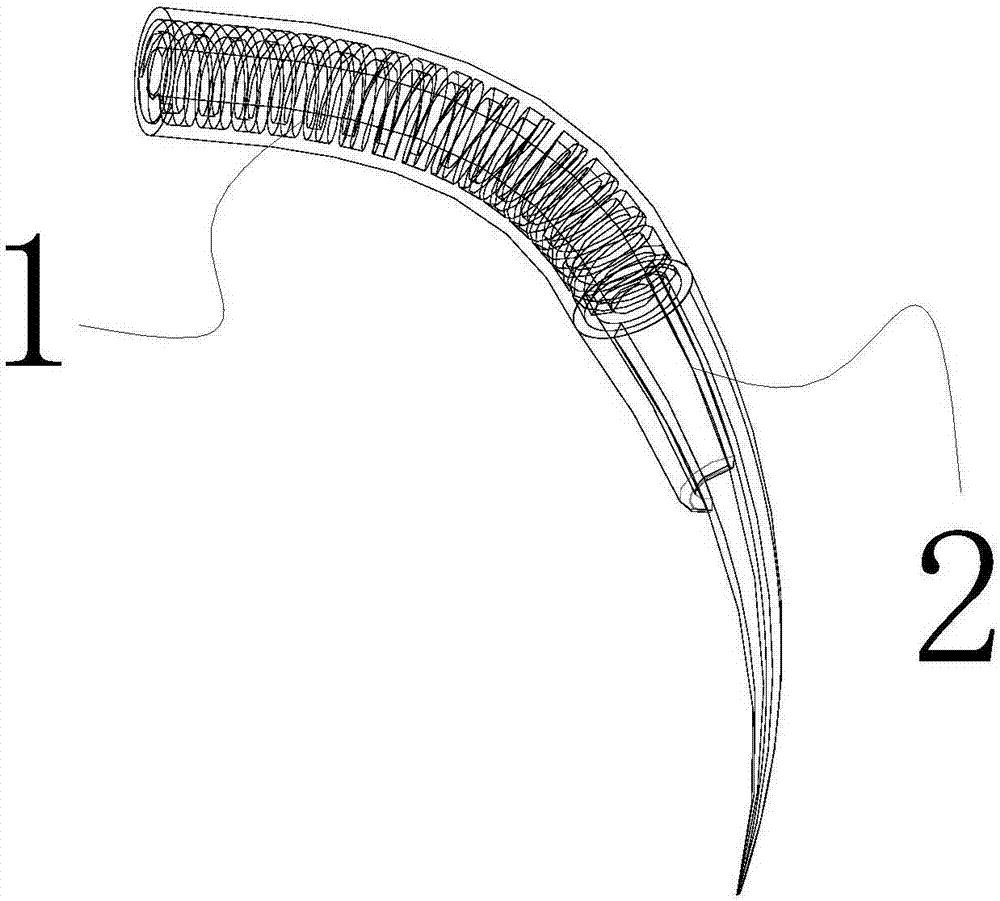Liquid light conduction device for intervention
A light conduction, liquid technology, applied in the field of interventional radiology, which can solve the problem that the catheter cannot transmit light energy.
- Summary
- Abstract
- Description
- Claims
- Application Information
AI Technical Summary
Problems solved by technology
Method used
Image
Examples
Embodiment 1
[0041] Such as Figure 1-11As shown, a liquid light transmission device for intervention includes a catheter 1, a tail sheath 2 and a liquid-laser coupler 3, and its main body is a catheter 1 made of metal, such as made of stainless steel; the inside of the catheter 1 It is a cavity 5 structure, and the liquid medium and laser can be transmitted in the cavity 5. The liquid medium can be physiological saline, photosensitizer, etc.; the inner wall of the catheter 1 is coated with a metal reflective layer 6 to reduce the loss of laser transmission in the catheter 1 , then the liquid medium can be transmitted in the catheter, and the laser can be transmitted in the liquid wrapped in the metal reflective layer 6 and released to the diseased part through the tail sheath 2 . The periphery of the catheter is provided with a hydrophilic layer 4 that wraps the catheter, and the hydrophilic layer 4 can enhance the blood permeability of the device and reduce blood resistance; the material...
Embodiment 2
[0056] The catheter in Embodiment 1 can also be made of non-metallic materials, such as polymer or quartz.
[0057] During specific implementation, a 306 stainless steel conduit with an inner diameter of 0.3mm and an outer diameter of 0.5mm can be used as the main body, the inner wall is silver-plated, the outer wall is cut into a circular spiral pattern cutting, and the cutting depth is less than 0.2mm; the liquid in the catheter cavity 5 refracts The ratio is 1.33, and the laser is transmitted to the tail sheath under the reflection of the liquid and the inner wall of the catheter. The tail sheath is tightly wrapped on the outer wall of the catheter with a transparent heat-shrinkable polymer material, the tail sheath is curved and gradually becomes thinner, and the tail sheath and the catheter can be integrally formed; the tip of the tail sheath, that is, the diameter of the outermost free end can be compared with the The diameter of the cavity 5 in the catheter is the same,...
PUM
 Login to View More
Login to View More Abstract
Description
Claims
Application Information
 Login to View More
Login to View More - R&D
- Intellectual Property
- Life Sciences
- Materials
- Tech Scout
- Unparalleled Data Quality
- Higher Quality Content
- 60% Fewer Hallucinations
Browse by: Latest US Patents, China's latest patents, Technical Efficacy Thesaurus, Application Domain, Technology Topic, Popular Technical Reports.
© 2025 PatSnap. All rights reserved.Legal|Privacy policy|Modern Slavery Act Transparency Statement|Sitemap|About US| Contact US: help@patsnap.com



